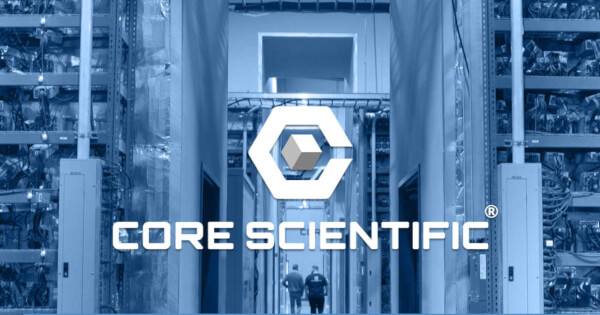Core Scientific Reports Strong Financial Performance in Q1 2023
Rebeca Moen May 09, 2024 14:23
Core Scientific, a Bitcoin miner firm, saw a 49% increase in Q1 2023 revenue to $179.3 million, with a net income of $210.7 million, despite facing risks from Bitcoin price volatility and debt.

Core Scientific Inc, a Bitcoin miner firm, has released its Q1 2023 financial report, showcasing strong revenue growth and improved profitability. The company's performance was driven by increased Bitcoin production, hosting revenue, and effective cost management. However, it also faces risks associated with Bitcoin price volatility and substantial debt. Let's delve into the details of Core Scientific's Q1 2023 financial report.
Robust Revenue Growth
Core Scientific reported a total revenue of $179.3 million in Q1 2023, representing a significant 49% increase compared to the previous year. This growth can be attributed to various factors, including increased Bitcoin production and hosting revenue. The company's Bitcoin mining revenue reached $150 million, while hosting revenue contributed $29.3 million. The higher Bitcoin prices and the company's mining capacity played a crucial role in driving revenue growth.
Improved Profitability
Core Scientific achieved a net income of $210.7 million in Q1 2023, a substantial improvement from the net loss of $388,000 in the previous year. This impressive profitability can be attributed to gains from obligations and a decrease in Chapter 11 financing expenses. The company's effective cost management and operational efficiency also played a significant role in driving profitability.
Key Financial Metrics
Several key financial metrics highlight Core Scientific's strong performance in Q1 2023:
Gross Margin: The company achieved an overall gross margin of 43%, with Digital Asset Mining contributing 46% and Hosting contributing 32%.
Operating Margin: Core Scientific achieved an operating margin of 31%.
Adjusted EBITDA: The company reported an adjusted EBITDA of $88 million, representing a remarkable 118% increase year-over-year.
Cash and Cash Equivalents: Core Scientific's cash and cash equivalents increased to $98 million, up from $50 million at the end of 2023.
Debt Reduction: The company successfully reduced its debt to $608 million from nearly $1 billion at the end of 2023.
Bitcoin Production and Power Cost:
Core Scientific's Bitcoin production in Q1 2023 reached 2,825 bitcoins, the highest among public companies. The company's power cost per kilowatt-hour was $0.043, and it is expected to be between $0.045 and $0.047 in 2024 . These figures demonstrate Core Scientific's efficiency in Bitcoin mining operations.
Expansion and Infrastructure
Core Scientific has expanded its infrastructure footprint, currently operating 745 megawatts with contracts for up to 1.2 gigawatts. This expansion positions the company as a leader in Bitcoin mining infrastructure. Additionally, Core Scientific has entered into a high-performance compute hosting contract, leveraging its existing infrastructure for new revenue streams. This strategic focus on both Bitcoin mining and high-performance compute hosting provides stable, multiyear, high-visibility cash flows, which can help buffer against Bitcoin price volatility.
Challenges and Risks
While Core Scientific has achieved impressive financial results, it faces inherent risks associated with the volatility of Bitcoin prices, which can impact profitability. The company's significant reliance on the cryptocurrency market exposes it to regulatory and market risks that could affect operational stability. Furthermore, Core Scientific has a substantial amount of debt, although it has been reduced to $608 million from the previous year. The company's growth and expansion plans require substantial ongoing investment in infrastructure and technology . The transition into high-performance compute hosting also requires significant time and capital investment, with full conversion of infrastructure projected to take three to four years.
Image source: Shutterstock.jpg)

